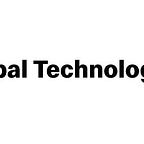Rolling in the deep
To accommodate evolving stakeholder needs, a McDonald’s Global Technology team is moving away from traditional planning to an agile rolling-planning approach.
by Shawna Schorsch, Director, Product Engineering — Drive Thru Technology
Have you ever found yourself in a position where you created a product roadmap, spent hours perfecting your execution plan with your engineering teams, and even received approval to move forward with the plan as committed — only to find that you’ve learned something new or priorities have changed, and now have little flexibility to adjust?
I’m sure most product managers have felt the pressures of creating a plan and being asked to stick to it, only to realize change is necessary. Business, customer, and technology needs can change frequently. Traditional project management methodologies, such as waterfall, often leave us in a position where it’s difficult to pivot from the original plan.
In our ever-changing business environment, we need to ensure we can be nimble and flexible to react to whatever changes come our way. This is where rolling planning comes in.
Rolling planning provides flexibility for programs and teams by focusing on iterative work and frequent project-plan updates. For instance, one of our cross-functional Drive-Thru products leverages rolling planning on both a quarterly and monthly cadence, providing a consistent and continual review of product roadmaps and detailed development plans. This approach increases confidence against delivery as technical product teams are consistently aligned with the needs of the program, even in the event the program or business needs change.
The key to a successful planning event is preparation. On a quarterly basis, the product and engineering leads come together to review the program objectives and key results (OKRs). OKRs are foundational in setting up large, cross-functional programs and complex products for success. Aligning work directly to each objective and supporting key result(s) helps ensure teams are working toward shared program objectives and delivering the highest value by not using capacity for non-priority work.
During the quarterly planning session, each Product Engineering Manager presents their detailed development plan by sprint, calling attention to any dependencies and risks to their overall plan. This approach allows dependent teams to mitigate the dependency by ensuring they account for the work in their respective plan. At the end of the session, teams are asked to commit and provide a confidence vote on achieving the plan. With the conclusion of the quarterly planning session, each sprint’s scope is predictable by team, which is critical to the program’s delivery success since the product releases to production occurs regularly.
You may be wondering how a quarterly plan with a commitment allows for flexibility for programs and teams, without turning into waterfall on a 12-week schedule. The short answer is it doesn’t, which is why we also have a monthly cadence for cross-program check-ins. In addition, the cross-functional teams meet weekly to conduct the program “scrum of scrums” ceremony, providing the opportunity to raise risks and blockers early, ensure the team is working on the highest-priority work, adjust plans accordingly as customer, business, and technology needs change.
To summarize, rolling planning for this product uses:
- A quarterly planning session to outline delivery sprints for the quarter based on the program objectives
- A monthly check-in to provide a forum to formally recommit or decommit to quarterly plans based on new learnings
- A weekly “scrum of scrums” to ensure sprint-level deliverables are progressing as planned and proactively adjust course, if needed
Connecting strategy to execution can be a challenge, especially in such a cross-functional, multi-team program. To combat these challenges, we use a road-mapping tool that provides a program-board view, which reflects each team’s epics by sprint/release.
The road-mapping tool also gives us the ability to directly link work with an applicable program objective and key result, which allows us to track planned progress and impact versus actual results. The tool also lets us directly link work with an applicable program objective and key result, providing real-time visibility to track planned progress and impact versus actual results.
Rolling planning provides many benefits when compared with traditional project-planning methodologies, such as waterfall. Quarterly, monthly, and even weekly forums enable cross-functional teams to review, define, and even revisit their development plans based on the ever-changing customer, business, and technology needs while also providing high-confidence predictability in the software delivery against agreed-upon program objectives.
